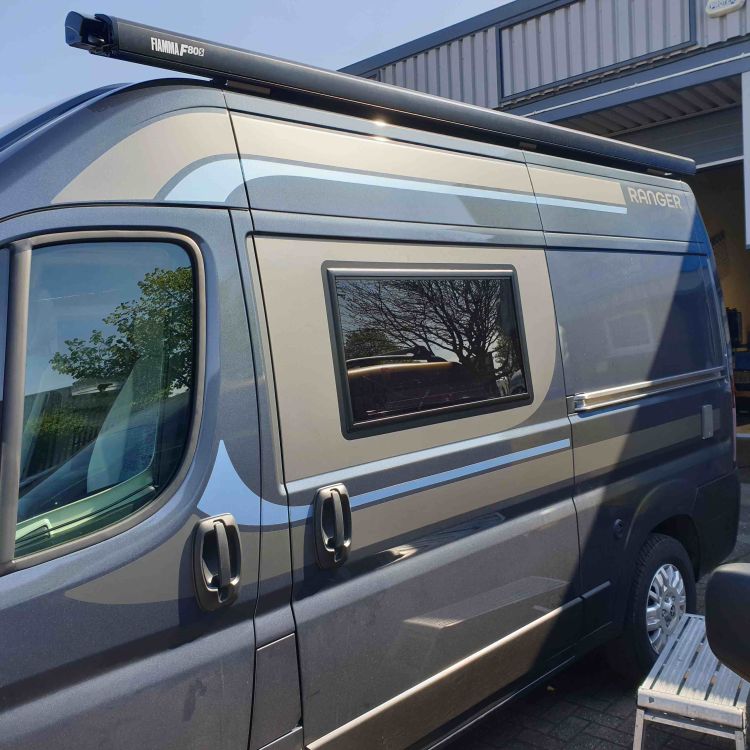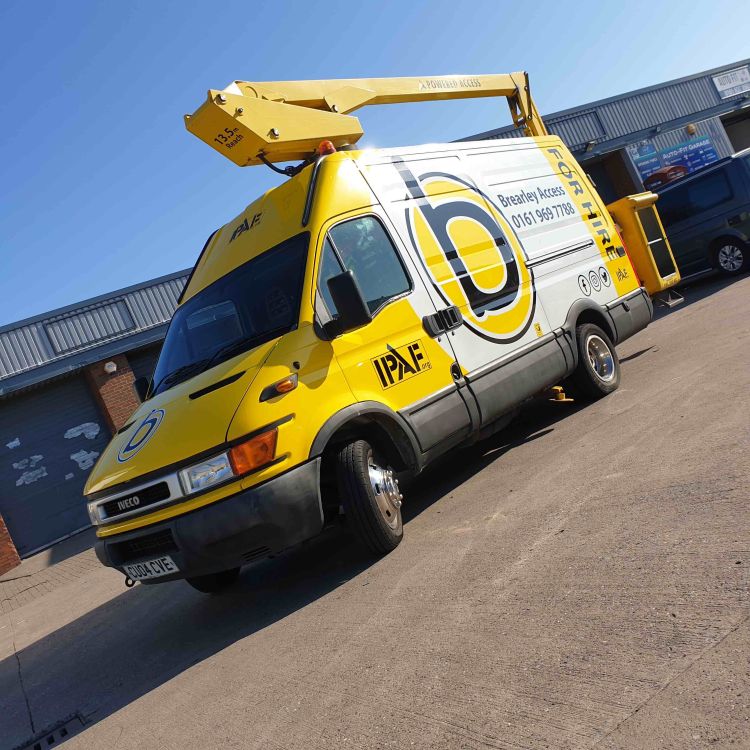Driving to the Future


Seymour Sign & Print is owned and operated by father Paul, and son, David Hammond. The Hammond name has roots in the design and print industry spanning over 45 years. Following the sale of Paul’s brother Bob’s company and his subsequent retirement, David was at a crossroads after leaving the Royal Navy. The timing was right, David and Paul purchased the wide format print equipment from Uncle Bob, and established Seymour Sign & Print in November 2010.
David says, “We’ve always enjoyed producing vehicle graphics, and it has formed a large proportion of our sales for many years. During the pandemic, national and local lockdowns, we looked at our business and made the decision to scale back. We sold one van, our small format print machinery and halved our workshop size.”
Paul Hammond adds, “David has taken the lead in driving the business forward, particularly by introducing Clarity workflow software, and introducing new, efficient processes behind the business. I’d be lying if I said I didn’t have my concerns about his plan to reduce our in-house production and I wouldn’t say the transition has been easy. It’s taken time and there have been moments where we’ve questioned the decision. However, in all honesty, we haven’t looked back and all the evidence seems to suggest we’re very much on the right track.”
David explains, “It sounds counter-intuitive, but crunching the numbers it was evident we were over equipped. We were trying to do be all thing to all men and this was stretching us. With the ease of outsourcing, and the competitive prices available it made sense to outsource some aspects of our production.”
“We all enjoyed producing vehicle graphics, so we concentrated on vehicle signage, specifically commercial vehicle signage, including partial wraps. We invested in upgrading our printer with a new Roland VF2-640. This printer’s orange and green inks allow us to print vibrant colours previously unachievable, and complementing our Graphtec FC8600-160. We did consider a Latex, but the outgassing times with solvent machines rarely cause us an issue.”
How do you do it?
David was getting some interesting looks and a few friends in the industry were asking how he can make it work concentrating on vehicles? He found this was easy to answer. “Our target market is concentrated on certain types of customers and types of vehicle signage. It takes an awful lot of budget signs to pay the bills and wages. However, we also don’t undertake full wraps, or car wraps. We could do them but we don’t enjoy them and we find it a time consuming process that takes us away from servicing our customers’ needs.”
“Over the past 11 years, we’ve encountered issues, and problems. We have learned from these mistakes and developed a process that works for us, which minimises the chances of the issues recurring. This step-by-step process is explained very early on to customers, so we’re all aware of what to expect. It’s a streamlined process that is repeated with each customer.”
“We no longer provide free designs, or artwork. Again, I was told people won’t pay it, but we rarely encounter issues. As a result, our time is spent dealing with serious paying customers. We’re able to deliver a high level of service to these genuine customers, rather than throwing out prospective designs in the hope of winning them, or seeing the design being ripped off by the numerous online supply-only suppliers.”
Staying on top of costs
David continues, “By having a good understanding of our costs (especially important with the regular increases) we’re able to provide accurate price ranges for various sizes and styles vehicle signage. We know the lower value end of the market isn’t sustainable for us. We’ve identified the market we work in, and we’re not afraid to decline work from some customers if it doesn’t fit our model. I feel there is no shortage of companies filling the budget market, and we know what pays the bills. Using Clarity Software to manage our business we’re able to price consistently and accurately quote for work. We can also keep records of materials and colours used and organise historical artwork, which makes accident repair work much easier.”
“The other benefits we’ve found by concentrating on a smaller market is the reduction in the stock we carry! We carry a core choice of Metamark coloured vinyl, ordering in specific colours as required, and their MD5 digital media and laminate, which is suitable for 95% of our work. To a lesser extent we still print banners, posters, labels, but have reduced the stock we carry dramatically. In addition, we’re not chasing around conducting surveys or meeting off site. Most vehicles are brought to our workshop for installation, ensuring we can be more responsive our customers.”
It seems to be working! Seymour has gained many new customers, small fleets and even local authority work. “We even have local sign-makers referring enquiries to us, as they don’t have the facilities to accommodate vehicles, or are concentrating on other markets,” he adds.
“Unless you’ve been living in a cave, you can’t fail to notice that costs of everything have increased. Commercial vehicles are no exception, compounded by the ‘chip’ shortage, and huge delays on commercial vehicles. This was exacerbated further being Manchester based and the ‘clean air zone’ that was due to be rolled out. Customers found themselves investing significant and somewhat inflated amounts of money on new vehicles, with every intention of keeping them running for as long as possible. We noticed that many customers were then looking to invest in higher quality signage. After all - you don’t wear Primark shoes with a designer dress.”
David Hammond concludes, “I encourage all small sign companies to find their niche, especially if you enjoy something in particular and are really good at it. There are companies thriving who just produce stickers, this is something that wouldn’t be for us. Others are branding office spaces to high standards and so marketing is an important part of their success. We have certainly been successful by making big decisions and seeing them through. We have been fortunate to have several trusted friends within the industry who we could call upon for advice and run ideas past. They probably don’t realise it but they’ve been invaluable.”
